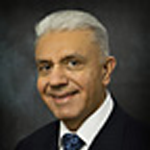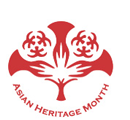Achieving a Dream
History, Editorials & Essays
Zulfikarali R. Kassamali

After Idi Amin expelled all the Asians from Uganda in 1972, I came to Canada and even before I had settled down, I was given the daunting task of settling other immigrants, most of whom had come with only the clothes on their backs.
It was the first time that mainstream Canada was faced with thousands of non-white immigrants, many of whom did not even speak English. We were faced with discrimination, racism, hatred and unacceptance. I then realized there was a dire need for change - change that would help educate Canadians about people of colour, our cultures, our ways of life and even our religions and our values. Most importantly, there was a need to make people understand where we were coming from and change the way think and change their attitudes.
Ever since, I have been constantly involved through the years in ensuring that discrimination is eliminated from the minds of those who do not understand and I have worked towards that all my life. I therefore got involved in many advocacy groups to create policy changes and changes in regulations and the law to reduce the pain felt by those who had been discriminated against. Many people before me had done the same, for example, the contribution of the Chinese community in building Canada, the Sikhs who also helped build the railroad. We have heard numerous stories told to us of what all of these people went through.
Today we can say Canada has made vast strides in creating a shift in the paradigm, a shift in the way mainstream Canadians think and Canada has come a long way having had the first Chinese Governor General, first south Asian Human Rights Commissioner, first Muslim Senator and many Muslim and South Asian members of Parliament, including the first Premier of British Columbia.
On looking back, I want these moments to be left behind as a legacy, as history for generations to come and for them to understand what their ancestors went through and to fully appreciate the contribution made by those who came before them. The threads of time woven into the mosaic of a multicultural Canadian tapestry comprising of different threads representing different cultures is indeed unique and perhaps the only and best of its kind anywhere in the world. Seeing how the world around us is also in turmoil, it can serve to remind others present and future of how we arrived here.
Thus my idea came into fruition the idea of creating a Virtual Museum. This will clearly portray the journey of our ancestors from the beginning to what we see today.
So how can this be accomplished and what does it entail? We can either find a property or place in the Dundas area or the Gerrard area which site can be renovated with the help of volunteers or even students from school who want to earn a few credits in history. We can also fund raise for this program. Once we have a place to start, we can call upon people who can bring old documents, pictures, photographs, videos, artifacts, and items of cultural interest depicting our heritage, etc. All these can be displayed at the site. This was my original dream. However, technology has made a eat impact in our lives and this museum can be possible through the computer like a media presentation and all the material collected can be archived.
This idea was born a long time before the Canadian Foundation for Asian Culture (CFAC) was formed. When I was originally approached by Nancy Siew and together we created and incorporated the CFAC. When I originally suggested this idea, we both realized that it was a long-term strategy. At that time to have put such a program into place would have required a huge warehouse. Today, this may need just a small place for us to show case some of the important items collected and the rest can be shown as a virtual museum on screen.
In order to maintain and sustain such a project, we need to put a body into place, like a board or an organization which will continue this work long after I have left the earth. [if that at all is a possibility because I intend to stay forever]. We have made a niche in the books of history and we should try and showcase that.
Zul, The Dreamer.
Zulfikarali R. Kassamali began his career in East Africa, where he worked primarily in business. He came to Canada in 1972 as a refugee. Upon his arrival, he joined the Welcome House, Manpower and Immigration Center, committed to helping Ugandan refugees integrate into society. That same year, he created the first multicultural program for the Don Mills Foundation for Seniors.
Throughout his career, Mr. Kassamali has acquired considerable expertise, particularly with respect to the elderly and cultural diversity, and has served on several related boards. He also founded a number of organizations and programs for seniors including the Federation of Jambo Seniors and the Ismaili Seniors Action Team. Since 1991, Mr. Kassamali has chaired the North York Seniors' Health Centre Family Advisory Committee, which serves caregivers by providing advice and raising awareness of ethno-cultural differences and how to deal with them.
His community involvement has garnered him a number of awards such as the Toronto Police Services Community Services Award in 1998 and the Premier's Award for Community Service in 1996.
Kassamali's contribution in the creation of the Virtual Museum of Asian Canadian Cultural Heritage.
Kampong Ku Radio Interview (MP3 format / 10.1 MB download)
